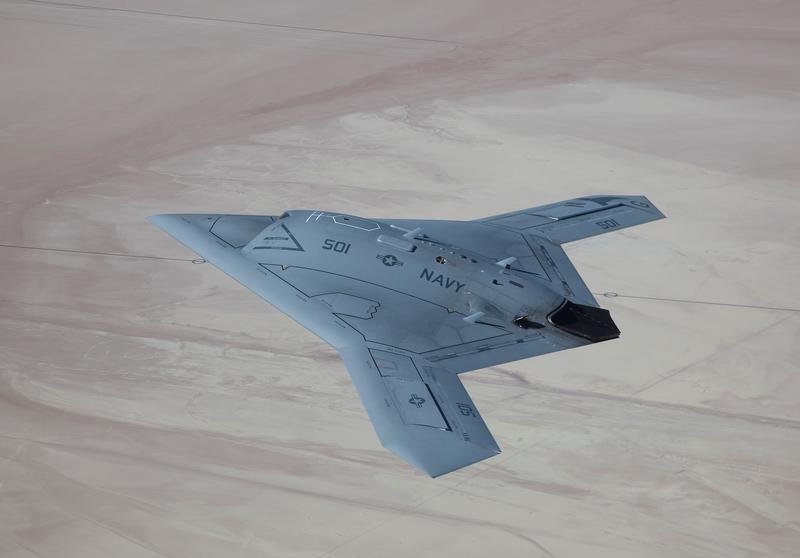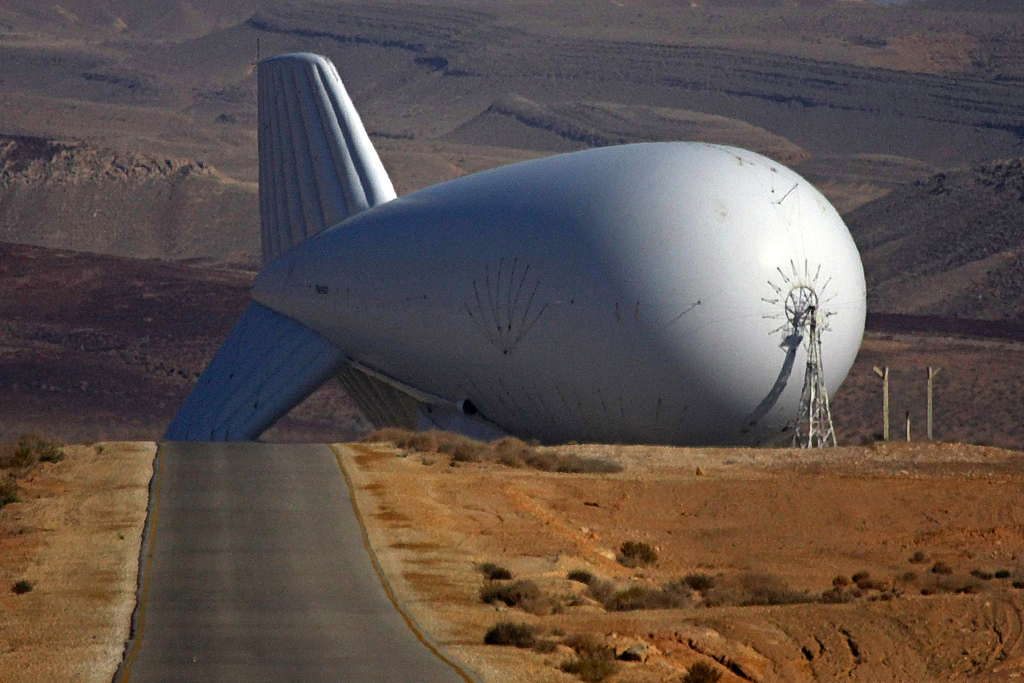
We Went Inside Northrop Grumman Demonstration of Critical Anti-Ballistic Missile Technology.
Sometime in the future, diplomacy may fail.
An overnight incident in the Pacific between a U.S. Navy vessel and an adversary nation submarine causes a collision. A U.S. Air Force surveillance plane is fired upon as it flies near an international airspace boundary. A rogue nation continues ballistic missile testing.
What happens when it becomes a real world crisis with an ICBM (Intercontinental Ballistic Missile)?
A missile launch indication from U.S. Air Force Space Command surveillance satellites happens at 0234 Hrs local. It is 1734 GMT, 10:34 AM in San Francisco, California in the United States. Sunday morning.
Silent lighted icons flash red on a U.S. early warning display. Red circles appear around them. They are automatically given a series of numerical designations: speed, altitude. Sea based radars add to the intelligence picture. More data becomes available. Algorithms extrapolate trajectory, acceleration, apogee, reentry and deceleration into the atmosphere. They calculate the missile’s potential impact point.

I sit in a chair watching the arc of the incoming ICBM headed to the United States’ west coast. The missile reaches its apogee, its maximum altitude in near space, and begins its terminal attack phase. It happens fast. I realize I am sweating. This feels very real. As real as today’s headlines. As the missile descends toward its target it begins to slow, but it is still moving faster than a rifle bullet.
The United States homeland is under attack by ICBMs launched from a rogue nation. It is the first time a nation state has attacked the U.S. homeland since WWII. A shooting war has started.
Intelligence analysts know the threat of real damage is moderate, but that doesn’t help. The warhead is likely small, crude by modern standards. It may not even function. The guidance system is not very precise. Chances are just as good that this warhead will land short in the Pacific or go long into the California mountains as it will detonate over the intersection of Market Street and 6th Street in the Financial District of San Francisco. It could spread radioactive material over several city blocks depending on the altitude it detonates at. It may even fail to detonate.
But that is not the point of this attack. The point is for a rogue nation to send a clear signal to the U.S. government: We can reach you. We have the will to attack. You are not safe.
Given recent headlines the ballistic missile threat to the United States is in the spotlight. What is the U.S. doing to counter the intercontinental ballistic missile threat?
Recently The Aviationist visited a secure facility at Northrop Grumman to learn more about the present and future of ballistic missile defense for the continental United States. We participated in a chilling drill to intercept an ICBM fired from somewhere on the Asian continent (Editor’s note: at the request of Northrop Grumman officials, we agreed not to name any potential adversary nation specifically).

Northrop Grumman’s Ken Todorov, Director of Global Air and Missile Defense, told TheAviationist.com, “This literally is rocket science.”
Todorov directed us through a simulated ICBM intercept over the northern Pacific using Northrop Grumman’s technology contributions to our nation’s Ballistic Missile Defense Systems. Several new technologies are showcased within Northrop Grumman’s Ground-based Midcourse Defense (GMD) system. These systems are not yet operational, but they are must-haves for the nation’s ICBM defense. Given the threat from rogue nations in the Pacific region, Northrop Grumman’s new technologies are not just critical, but essential to our nation’s defense in the immediate term.
Without systems like GMD our west coast is, for the first time in history, under threat of nuclear attack from an ICBM in control of a rogue nation.
A constant stream of data from a wide array of sensors tracks the incoming ICBM. We see the track on our large monitor, nearly the width of the room, and on our individual monitors. It’s eerily quiet.

“Ground Based Interceptor launch, Ft. Greely, Alaska.” The systems operator tells us. The track of an ascending missile appears on our screen. It arcs upward gaining momentum, curving to match the downward trajectory of the incoming ICBM.
“Ground Based Interceptor launch, Vandenberg Air Force Base, California.” A second lighted trajectory traces across the screen, originating from the continental U.S. west coast. Two U.S. missiles are in the air, with new proposed Northrop Grumman technology melding the intercept data and targeting information to help provide mid-course intercept data.
The lines converge silently toward one another, beginning to form a brightly lighted “Y” shape on the displays. We all follow the lighted display across the screen, the ICBM arcing downward, the interceptors arcing to meet them.
“This is a bullet hitting a bullet in the exo-atmosphere” Todorov tells us, gesturing to the three missile tracks as they converge together on the big screen. The projectile we are trying to hit is moving at 10,000 MPH now, and it is about the size of a trashcan.
There are four phases of ICBM flight.
The boost phase is the most difficult to intercept the vehicle in, but is where the launch is detected. The ascent phase is vulnerable to detection by the Aegis weapons system and interception by RIM-156 and RIM-174 Standard Missiles launched from land or at sea from U.S. Navy surface ships like the Ticonderoga class cruisers and Arleigh-Burke class destroyers. In the third phase, the “mid-course” phase, the incoming ICBM could be targeted by the exo-atmospheric THAAD missile system or additional systems still in development.
Northrop Grumman technology has the capability to make all these systems perform better together, and improve the likelihood of intercepting missiles before they reach the United States or any user nation.
The lines on the big display in front of us converge.
They complete the big “Y” shape over the eastern Pacific off the California coast. There is no sound. In an instant all three missile designators disappear. The intercept was successful.

Using several new key technologies from Northrop Grumman we killed the incoming ICBM over the pacific before it reached the United States.
Later we see video of a successful, actual test intercept of an ICBM target during a demonstration of the Ground-based Midcourse Defense (GMD) element of the ballistic missile defense system on May 30, 2017. A ground-based interceptor was launched from Vandenberg Air Force Base in California. The “anti-missile” missile was armed with an exo-atmospheric kill vehicle projectile. It successfully intercepted and destroyed a simulated ICBM launched from Kwajalein Atoll in the Pacific with a direct collision at re-entry speed and high altitude. The demonstration was widely regarded as impressive proof of the capabilities of the ballistic missile defense system.
Northrop Grumman’s contribution to missile defense is significant. At the beginning of 2017 Ken Todorov told media that, “Members of Congress face a myriad of difficult questions about how to best protect our homeland from a growing number of threats. In this era of declining budgets, it is critical our top national priorities provide those at the “tip of the spear” with the tools to protect our homeland from existing and emerging threats.”
The headlines confirm the ICBM threat from the Pacific region is real, making the need for missile defense perhaps the most urgent defense agenda for the United States.
Note: The Aviationist.com wishes to thank Lauren A. Green, Manager, Branding and External Communications for Northrop Grumman Mission Systems and the entire team at Northrop Grumman for their kind assistance with this article.
Related articles









